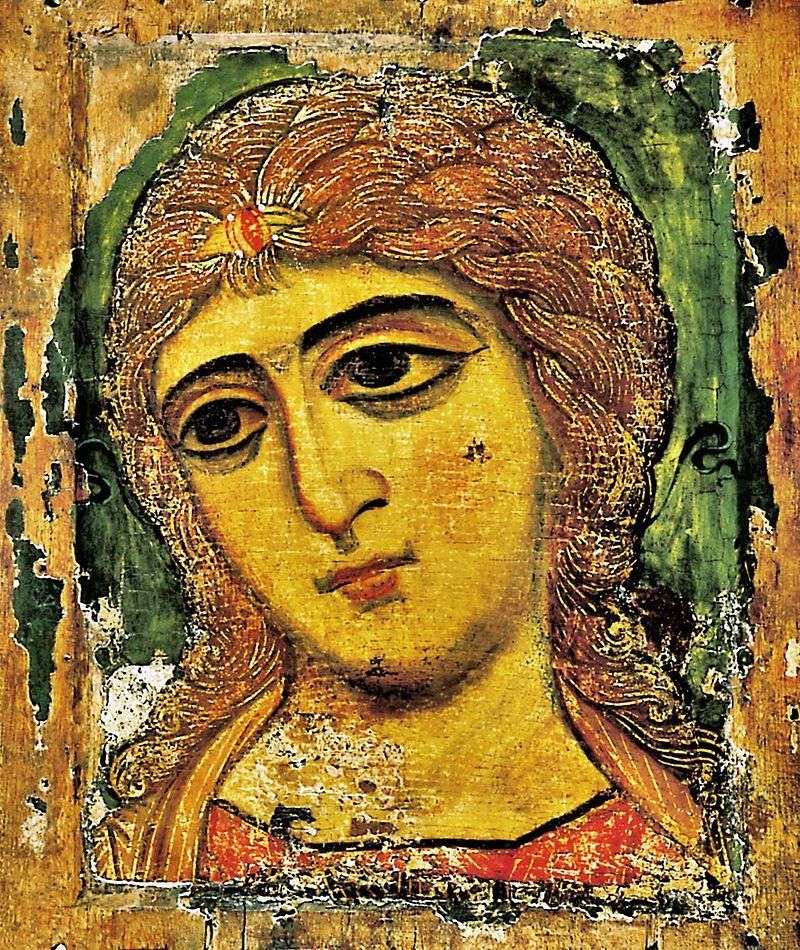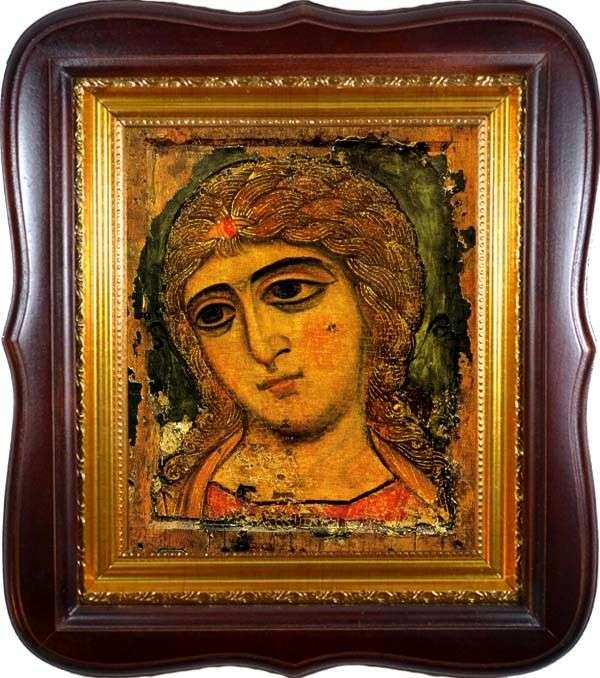
The ancient icon has reached our days with large losses of the paint layer and late alterations. The background, the inventory of the head of the archangel and part of the tunic were rewritten in later times, possibly in the 17th century. The face is registered during the restoration. But even what has survived is a testament to the outstanding icon painting skills of the artists of Kievan Rus. The icon gained fame in the first half of the 1920s, when it was discovered in the Antiquities Department of the Rumyantsev Museum in Moscow. It was so written down that it was attributed to Simon Ushakov.
Where does the “Angel of the Golden Vlas”, where he was for nearly eight hundred years, how he got to the Rumyantsev Museum, nobody knows and now will never be known. After the icon fell into the field of view of the researchers, the evaluation of its value was steadily increasing. This affected its movement from one large museum to another. When the Rumyantsev Museum was disbanded in 1925, the icon was distributed to the State Historical Museum. There, the icon was first shown in 1926 at an exhibition of monuments of ancient Russian iconography. After the exhibition “The Angel of the Golden Vlas” was taken by the Tretyakov Gallery. In 1934, the gallery, which was peculiar to take valuable things, but did not give, still gave the icon to the Russian Museum. It became the oldest icon-painting monument in his collection.
On the belonging of the “Angel of the Golden Vlasas” to this or that icon-painting school in the special literature there are a wide variety of assumptions. Some researchers considered it the creation of Suzdal masters, others attributed to Kiev. Most often, the icon was taken from Novgorod. However, up to now, too few monuments of the early Old Russian period have come down, so as to justify the existence of regional icon-painting centers in Russia in the 12th century. The iconography of this period, like the entire ancient Russian culture of pre-Mongolian times, was closely connected with Byzantium, wherece Rus received baptism and general Christian traditions. VN Lazarev made a cautious assumption that this icon, as well as “Savior not made with hands” with “Adoration of the Cross” on the back and “Ustyug Eve” “came out of the workshop of the Greek Petrovich, who, according to the testimony of the First Novgorod Chronicle, painted in 1196 the church of the Robe and Belt of the Virgin in Novgorod.” At the same time, Lazarev adds: “It would be wrong, however, to connect the Byzantizing direction in the Novgorod iconography of the 12th century only with the activities of this workshop.” The proximity of the icon to the Byzantine monuments is evidenced by the Eastern, Greek type of the archangel, the perfection of his soft modeling.
However, in the “Angel of the Golden Vlasy” there is no dry, ascetic abstraction characteristic of many Byzantine icons of the Cominovsky period. “The Angel of the Golden Vlasas,” the archangel Gabriel, certainly did not exist as a separate prayer image, but was part of the title deesis rite, which may have stood on top of the altar barrier of an unknown church. This explains the turn of the head of the archangel to the left, towards the Savior of the Almighty, whose icon was to be in the center, as well as the rare iconographic type of Gabriel. Usually it was depicted in waist or full length in traditional vestments and with Arkhangelsk attributes. On the same icon only the face of Gabriel is shown close-up, although the board is small. Inspired triumphant beauty of the archangel – a kind of standard of aesthetic representations of Byzantine icon painters. The face of the archangel is filled with quiet sadness, which is visible in the pensive gaze of his Byzantine great eyes. The integrity of the icon image rests on the color harmony, the unity of the tone, the proportionality of the forms, the rhythm of the rounded lines. A special nobleness is distinguished by linear outlines and golden strands of hair of the archangel, thanks to which he received the nickname “Golden Vlasas”. The icon uses the technique of multi-layered vortex with gradual highlighting of ocher in the protruding places of the face. thanks to which he received the nickname “Golden Vlas”. The icon uses the technique of multi-layered vortex with gradual highlighting of ocher in the protruding places of the face. thanks to which he received the nickname “Golden Vlas”. The icon uses the technique of multi-layered vortex with gradual highlighting of ocher in the protruding places of the face.
In shaded places shadows shine through a greenish sankirna base. Work on the icon was completed now with mildly expressed whitewashed animations and a thin brush of lips and cheeks. All this created the impression of an airy, ethereal icon space that met the metaphysical significance of the image. The refinement of the color scheme and the exquisitely sophisticated manner of the letter “Angela Golden Vlasas” attest to its Byzantine origin. The lime board is one-piece with an ark and with traces of two face keys.
 Archangel Gabriel, of the main deesis ranks by Jan van Eyck
Archangel Gabriel, of the main deesis ranks by Jan van Eyck Angel golden vlas
Angel golden vlas Saints Flor and Laurus in the guise of warriors
Saints Flor and Laurus in the guise of warriors Saint James the brother of the Lord
Saint James the brother of the Lord Healing a bleeding wife, with the Guardian Angel and the three saints in the fields
Healing a bleeding wife, with the Guardian Angel and the three saints in the fields Candlemas
Candlemas Nicholas the Wonderworker
Nicholas the Wonderworker The miracle of St. George about the serpent, with Paraskeva on Friday and St. Nicholas the Wonderworker in the fields
The miracle of St. George about the serpent, with Paraskeva on Friday and St. Nicholas the Wonderworker in the fields